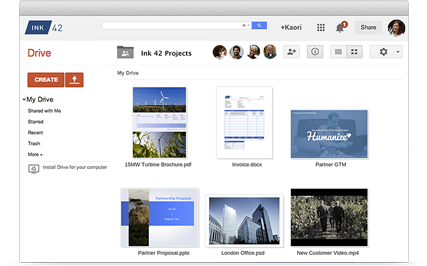

- #Google business email pricing for android#
- #Google business email pricing software#
- #Google business email pricing Offline#
- #Google business email pricing plus#
The suites also offer the same basic core applications. Microsoft provides Office client apps for Windows, macOS, iOS, and Android, and its web-based apps work across browsers.
#Google business email pricing for android#
Because it’s web-based, Google Workspace works in most browsers on any operating system, and Google also offers mobile apps for Android and iOS. And while Microsoft 365 is based on installed desktop software, it also provides (less powerful) web-based versions of its applications.īoth suites work well with a range of devices.
#Google business email pricing Offline#
Although Google Workspace is web-based, it has the capability to work offline as well. Both are subscription-based, charging businesses per-person fees every month, in varying tiers, depending on the capabilities their customers are looking for. Google Workspace and Microsoft 365 have much in common. Nowadays, choosing an office suite isn’t as simple as it once was. Microsoft 365 is what we’ve focused on in this story.
#Google business email pricing software#
Microsoft, meanwhile, has shifted its emphasis away from its traditional licensed Office software to Microsoft 365 (formerly Office 365), a subscription-based version that’s treated more like a service, with frequent updates and new features. Although Google’s productivity suite didn’t immediately take the business world by storm, over time it has gained both in features and in popularity, boasting 6 million paying customers, according to Google’s most recent public stats in March 2020. Then in 2006 Google came along with Google Docs & Spreadsheets, a collaborative online word processing and spreadsheet duo that was combined with other business services to form the Google Apps suite, later rebranded as G Suite, and now as Google Workspace. By the late ‘90s and early 2000s, Microsoft’s office suite had brushed aside rivals such as WordPerfect Office and Lotus SmartSuite, and there was no competition on the horizon. It booked $3 billion in Q2, up 43% from the year-ago quarter.Once upon a time, Microsoft Office ruled the business world. In February, Alphabet began disclosing quarterly cloud revenue. In October 2019, Soltero joined Google from Microsoft, where he had been a corporate vice president working on Office and the Cortana virtual assistant. Around the same time, the company rebranded other Google for Work services as Google Cloud.įormer Oracle executive Thomas Kurian replaced Greene as Google's cloud leader in January 2019, and Google raised prices for G Suite around that time. Previously, those online services were known as Google Apps, a name first used in 2006. In 2016, Google's cloud chief at the time, Diane Greene, introduced the G Suite brand to encompass Google Docs, Google Sheets and other productivity apps.

In 2014, Google rebranded Google Enterprise, which encompassed many of its products for businesses, as Google for Work. Google previously tried branding changes to boost its business products. In addition, the team communication app Google Chat will allow users to create documents from inside their text conversations. For instance, when a user mentions a colleague by name in a document, other users will be able to hover over the name to find contact information. In addition to the name and pricing changes, Google is rebranding the logos of several services to use all four colors in the main Google logo, and is introducing a handful of new features.

The new offerings "should translate into much more value to customers, for sure," said Javier Soltero, vice president and general manager of Google Workspace. Large businesses can contact Google's salespeople, as was the case before. There is also a new Essentials tier for teams and departments, which will be available for $8 per user per month.
#Google business email pricing plus#
A new Business Plus option with greater security features will cost $18 per user per month. The Basic and Business versions of G Suite, which had cost $6 and $12 per user per month, will remain available as Business Starter and Business Standard plans for customers with 300 or fewer seats. But Microsoft remains dominant in the email and document authoring software market, with 87.6% share in 2019, according to research company Gartner. Any growth could lift Google's cloud business, which reduces Alphabet's dependence on Google's advertising business, an operation that faltered in the second quarter under the pressure of a pandemic and a recession.Ĭonsumer services from Google such as Gmail and Google Drive are widely used, and the company has for years sought to replicate that success inside companies, schools and nonprofits. The changes might help Google increase revenue and become a more formidable challenger to Microsoft, whose Office 365 applications are more popular for business use. Personal Loans for 670 Credit Score or Lower Personal Loans for 580 Credit Score or Lower Best Debt Consolidation Loans for Bad Credit


 0 kommentar(er)
0 kommentar(er)
